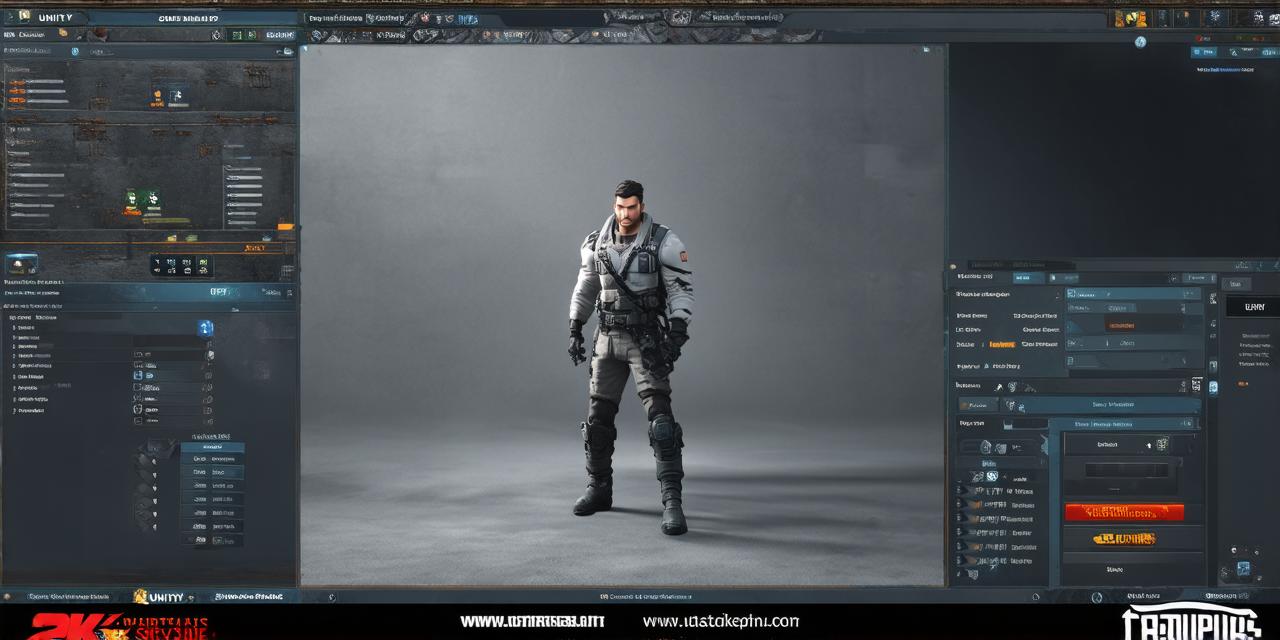
1. Define Your Game’s Concept
Before you start creating your 3D survival game, you need to define its concept. The concept should be clear and compelling, providing players with a unique gaming experience.
Consider the following questions when defining your game’s concept:
- What is the setting of your game? Is it a post-apocalyptic world or a fantasy realm?
- Who are the main characters in your game? Are they survivors, adventurers, or something else?
- What are the objectives of your game? Is it to survive as long as possible or to find a hidden treasure?
- What kind of gameplay mechanics will be included in your game? Will it be first-person shooter, survival horror, or something else?
1. Create Your Game World
The next step is to create your game world using Unity’s powerful 3D modeling and animation tools.
Here are some tips to help you create a compelling game world:

- Start with a rough sketch of your game world, including its terrain, structures, and objects.
- Use Unity’s built-in assets or create your own assets using 3D modeling software like Blender.
- Pay attention to the details in your game world, such as lighting, textures, and sound effects. These small details can make a big difference in the overall look and feel of your game.
- Test your game world regularly to ensure that it is functional and engaging for players.
1. Design Your Game’s Mechanics
The mechanics of your game will determine how players interact with the game world and each other.
Here are some tips to help you design compelling game mechanics:
- Consider the type of gameplay you want to include in your game, such as combat, crafting, or exploration.
- Test your game mechanics regularly to ensure that they are fun and engaging for players.
- Use Unity’s scripting tools to create custom mechanics that fit your game’s concept and theme.
1. Develop Your Game’s Storyline
A compelling storyline can make your game more immersive and engaging for players.
Here are some tips to help you develop your game’s storyline:
- Create a clear and compelling narrative for your game, including the main characters, their objectives, and the challenges they face.
- Use Unity’s built-in tools or third-party software to create interactive cutscenes that bring your story to life.
- Pay attention to pacing and structure in your storyline, ensuring that it is engaging and keeps players interested.
1. Optimize Your Game for Performance
Optimizing your game for performance is crucial for providing a smooth and enjoyable gaming experience.
Here are some tips to help you optimize your game:
- Use Unity’s built-in profiling tools to identify performance bottlenecks in your game.
- Optimize your game’s assets, such as reducing the number of draw calls and optimizing textures.
- Use caching and other techniques to reduce load times and improve overall performance.
1. Test Your Game Thoroughly
Testing your game thoroughly is crucial for ensuring that it is bug-free and fun to play.
Here are some tips to help you test your game:
- Test your game on various platforms, including PC, mobile, and console.
- Use Unity’s built-in testing tools, such as the Debugger and Profiler, to identify and fix bugs.
- Get feedback from beta testers and other developers to improve your game’s overall quality and user experience.
Case Study: Creating a Survival Game Using Unity
To illustrate how to create a survival game using Unity, let’s look at an example of a survival game called “Island Survivor”. Island Survivor is a first-person survival game set on a deserted island. The objective of the game is to survive as long as possible by gathering resources, building shelter, and defending themselves against dangerous wildlife.
1. Define the Game’s Concept
The concept for Island Survivor was inspired by classic survival games like “Minecraft” and “DayZ”. The game takes place on a deserted island, where players must scavenge for resources, build shelter, and defend themselves against dangerous wildlife.
1. Create the Game World
To create the game world for Island Survivor, we used Unity’s built-in assets and 3D modeling software to create the island terrain, structures, and objects. We also created custom assets, such as weapons and tools, using 3D modeling software.
1. Design the Game’s Mechanics
The mechanics of Island Survivor include resource gathering, crafting, building, and combat. Players can gather resources like wood, stone, and metal by chopping down trees, mining rocks, and looting abandoned structures. They can then use these resources to craft weapons, tools, and shelter.
1. Develop the Game’s Storyline
The storyline for Island Survivor is centered around the player character’s struggle to survive on the deserted island. The game starts with the player waking up on the beach, with no memory of how they got there. As the player explores the island, they discover clues and artifacts that hint at a larger story.
1. Optimize the Game for Performance
To optimize Island Survivor for performance, we used Unity’s built-in profiling tools to identify performance bottlenecks in the game. We also optimized the game’s assets by reducing the number of draw calls and optimizing textures. We also used caching techniques to reduce load times and improve overall performance.
1. Test the Game Thoroughly
To test Island Survivor, we tested it on various platforms, including PC, mobile, and console. We used Unity’s built-in testing tools, such as the Debugger and Profiler, to identify and fix bugs. We also got feedback from beta testers and other developers to improve the game’s overall quality and user experience.
Conclusion
Creating a 3D survival game using Unity is a challenging but rewarding process. By following these steps and best practices, you can create an engaging and immersive game that players will love to play. Remember to define your game’s concept, create your game world, design your game mechanics, develop your game’s storyline, optimize your game for performance, and test your game thoroughly. With these tips in mind, you can create a successful 3D survival game that players will be talking about for years to come.

